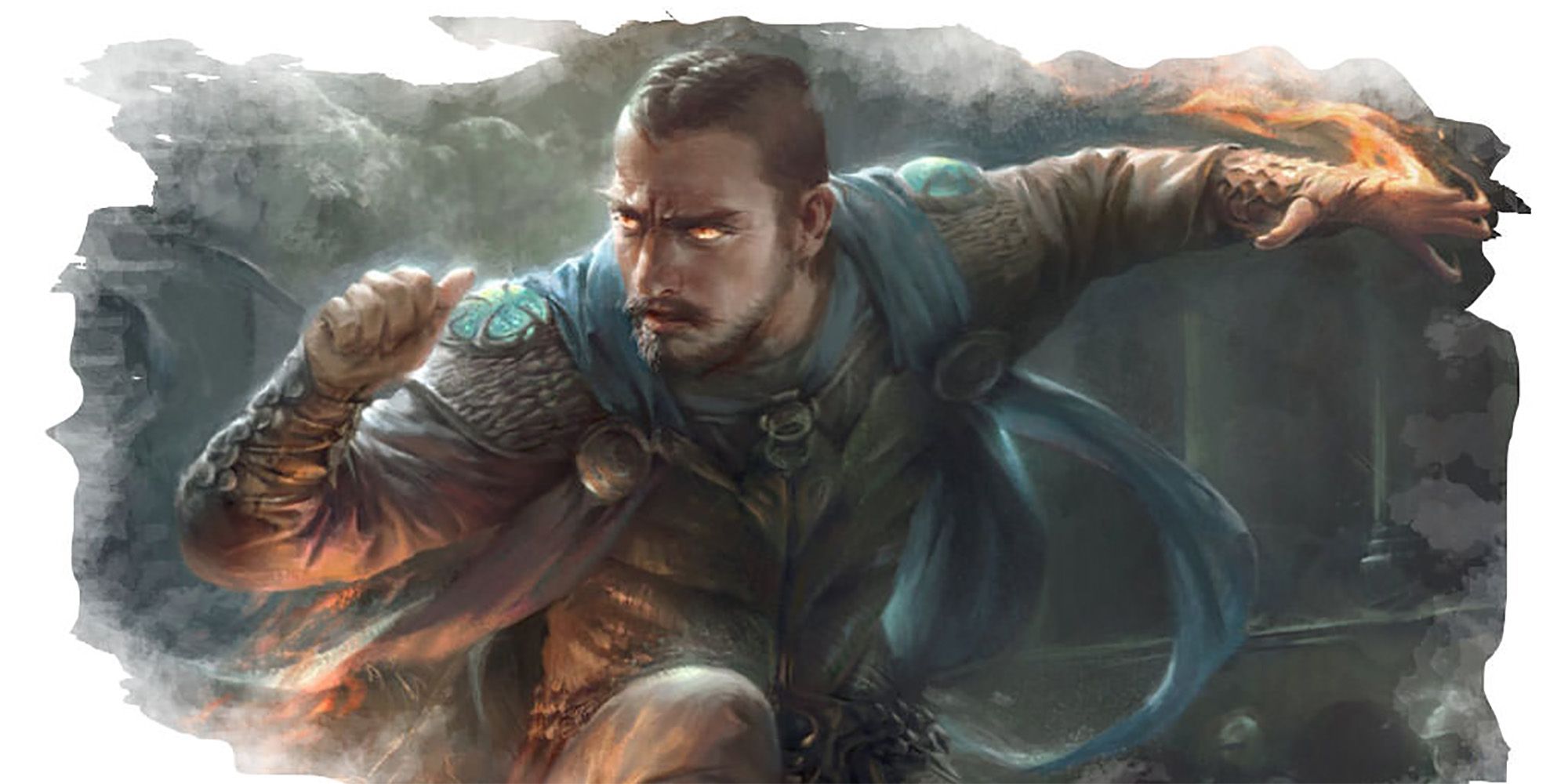

In addition to forgoing armor, most monks often used only their bare hands for weapons, delivering powerful blows that were enhanced through a monk's use of ki. This ability was impeded however, by the use of armor, which is why most monks eschewed it. Among the most basic capabilities granted by monks' control of their own ki was an enhanced awareness of their own surroundings, improving their ability to sense and avoid attacks. Monks ability to manipulate ki gave them a wide variety of special abilities, as did some monks' skill with psionics or divine magic. A few were sent into the world with a particular purpose by their superiors, Whatever the reason, the transition from the communal life of the monastery to one of solitary traveling was rarely easy on monks. Others were forced from their monastery for violating some rule of their order. Some monks left out of a desire to test their own capabilities, perhaps as a means to spiritual development. Monks who chose to become adventurers did so for a number of various reasons. And among the more savage humanoids such as orcs or goblinoids monks were an utterly alien tradition. Likewise gnomish and halfling monks, with the exception of stronghearts, were not particularly common. However, dwarves, in spite of their hierarchical and orderly culture, found the concept of the monk distasteful or bizarre and as a result few chose such a path. Elves also make capable monks due to their natural agility and perceptiveness. Most monks were humans or half-humans such as half-elves or half-orcs. Other monks came from a different background, most often within cities where masters of an order set up schools to teach the fighting style and traditions of his or her order to prospective students. As a result of their young induction, relatively few monks felt any close connection to their previous families or friends, and instead looked to their fellow monks as their family. Most monks came to their individual monastery at an early age, either as orphans or as members of starving families. Most monks adhered to neither extreme, however. Evil monasteries, on the other hand, were often tyrannical bastions, ruling the surrounding lands through fear or serving despots as spies and assassins. Good monasteries were servants of the people, protecting them from bandits and other threats. However, monasteries - and the monks that resided within - varied between good and evil. Due to the discipline imposed by this training, monks were almost always of a lawful temperament. Wherever they were based, monks rigorously trained their bodies and minds towards perfection, enabling them to defend themselves with their bare hands or a few select weapons. Monasteries that were located within or near towns or villages were generally on good terms with their neighbors, providing various services in exchange for food or other resources. Some monasteries were located in reclusive mountains others operated in city slums. In Faerûn proper the Order of the Dark Moon and the Disciples of Saint Sollars the Twice-Martyred, devoted to Shar and Ilmater respectively, were generally well-respected. In Shou Lung the Iron Hand, Five Stars, Northern Fist, and Southern Star schools were among the most highly reputed, with branches in Shou communities throughout Faerûn. Monks usually lived in monasteries, which could be found throughout all of Toril, though most commonly in Amn, Calimshan, Damara, Kara-Tur, the Lake of Steam, or Silverymoon, as well as Mulhorand. Monks of Ilmater, Shar, and Yondalla (among the few halfling monks) were also common and members of the Shining Hand were devoted to Azuth. The gods most commonly worshiped by monks tended to be champions of virtue like Bahamut, deities of battle such as Tempus, or those who required of their followers a disciplined lifestyle. Most monastic orders were devoted to the worship and internalization of the ideals of a god, though others were not and it was not required for a monk to manipulate ki, since a monk’s power most often came from within, rather than from divine sources. Monastic traditions appear to have originally arisen in Amn and Calimshan simultaneously, though traditions from Kara-Tur and other material planes immigrated to Faerûn and may have originated earlier.


 0 kommentar(er)
0 kommentar(er)
